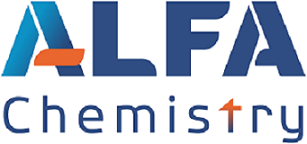| Alfa Chemistry | |
|---|---|
| Country: | United States |
| Tel: | 5166625404 |
| E-mail: | support@alfa-chemistry.com |
| QQ: | |
| Skype: | Chat Now! |
What flame retardants are available for elastomers?
Release time: 2024-04-22
Why do elastomers need flame retardants?
Elastomers are polymers that has elastic properties. Elastomers are known for their ability to withstand significant deformation without breaking or losing their elasticity. Elastomers are widely used in products such as seals, gaskets, wires, cables, and other applications where their flexibility and durability are required. Common examples of elastomers include natural rubber, synthetic rubber (such as styrene-butadiene rubber and neoprene), and silicone rubber.
Elastomers are highly flammable materials that can ignite and burn rapidly when exposed to flames or high temperatures. Besides, many industries (such as automotive, electronics, construction, and transportation) have specific safety regulations and standards that require materials to be flame retardant. Therefore, flame retardants are added to elastomers to reduce the risk of fire and slow down the rate of combustion. This helps to prevent or minimize the spread of flames and can provide valuable time for rescue operations, evacuation, or fire suppression.
Flame Retardants for Elastomers
- Inorganic Flame Retardants
These inorganic flame retardants can be incorporated into elastomer formulations either by direct blending or by surface treatment of fillers. Metal hydroxides are the most commonly used inorganic flame retardants, mainly including ATH and MH. Antimony trioxide (ATO) can react with halogen compounds to form a flame-retardant carbon layer, which can be used as a flame-retardant synergist. Zinc borate releases water vapor when heated, thereby suppressing smoke and flame retardant.
- Halogen-Based Flame Retardants
Halogen-based flame retardants have historically been widely utilized due to their effectiveness. One type is chlorine-based flame retardants based on chlorinated paraffins with high chlorine content, mainly chlorinated paraffin-52 and chlorinated paraffin-40. Another category is brominated flame retardants, including polybrominated diphenyl ethers (PBDE) and tetrabromobisphenol A (TBBPA).
- Phosphorus-Based Flame Retardants
Phosphorus-based flame retardants are commonly used for elastomers due to their excellent flame retardant properties. These additives act in different ways, such as forming a protective char layer, releasing flame-quenching gases, or diluting flammable gases.

